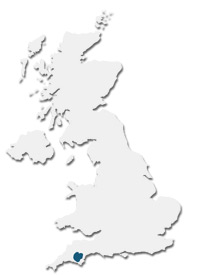Dartmoor, The UK
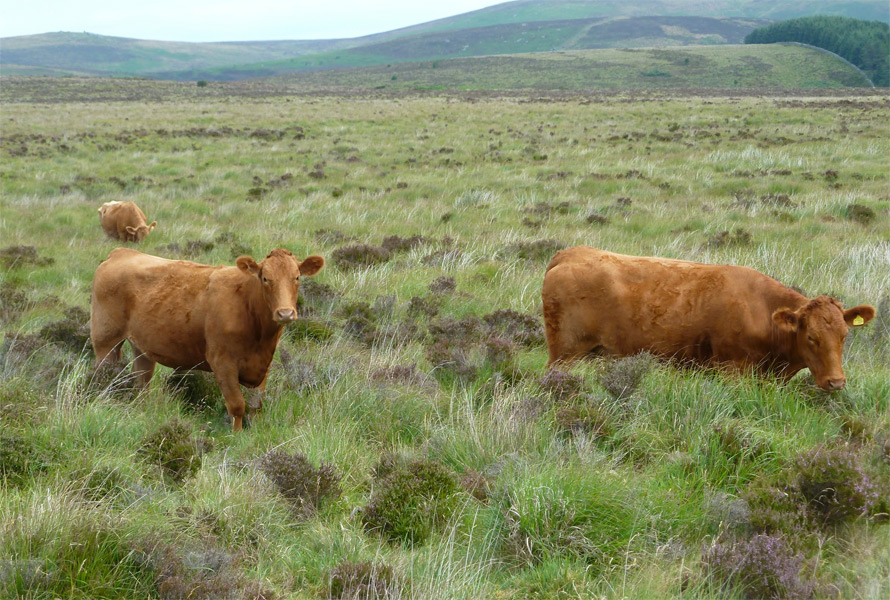 Grazing is essential for the moorland vegetation
Sheep, cattle and semi-feral ponies are the traditional grazing animals
Common rights on the moorland
National Park designated for many public benefits
Intensive farmland surrounds the moorland
The mires and blanket bog require extensive grazing
Farmers are proud of their heritage and traditions
Hill ponies are undervalued as conservation graziers
Inappropriate agri-environment prescriptions lead to under grazing
Mainstream TB Control regulations not suitable for common land
Low numbers of grazing livestock and fewer controlled burns has increased the risk from wild fires
An uncertain future for farmers
Concern over succession
The Dartmoor Vision
Dartmoor Farming Futures
Dartmoor Commoners’ Council
Fire Management Plans
TB Control Plans
Farmers need simple but effective incentives
Mobile services
Grazing is essential for the moorland vegetation
Sheep, cattle and semi-feral ponies are the traditional grazing animals
Common rights on the moorland
National Park designated for many public benefits
Intensive farmland surrounds the moorland
The mires and blanket bog require extensive grazing
Farmers are proud of their heritage and traditions
Hill ponies are undervalued as conservation graziers
Inappropriate agri-environment prescriptions lead to under grazing
Mainstream TB Control regulations not suitable for common land
Low numbers of grazing livestock and fewer controlled burns has increased the risk from wild fires
An uncertain future for farmers
Concern over succession
The Dartmoor Vision
Dartmoor Farming Futures
Dartmoor Commoners’ Council
Fire Management Plans
TB Control Plans
Farmers need simple but effective incentives
Mobile services
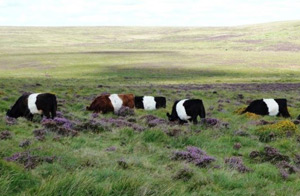
All the 567 farms on Dartmoor are livestock farms – beef cattle and sheep. The farms are predominately family run and often multi-generational. The dominant agricultural land use on the farms is grass: predominately permanent grass and rough grazing. Most of the fields have been “improved” to provide sufficient grass for grazing stock, usually sheep, in winter and for silage.
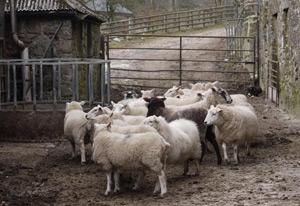
Almost all the moorland remains in the higher tier of an agri-environment agreement and all these agreements are predicated on winter cattle removal and lowering the overall numbers of sheep. Almost all cattle are removed from the moorland during the winter and some are wintered in purpose built sheds.
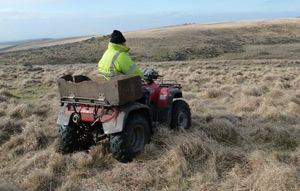
Dartmoor’s moorland is privately owned and the majority is common land and divided into commons administered by one of the 35 commons’ associations. Most farms have land that has common grazing rights to graze livestock attached to it. In 2016 there were 468 registered graziers but only about 170 use their grazing rights to put cattle, sheep and/or ponies on the common land.
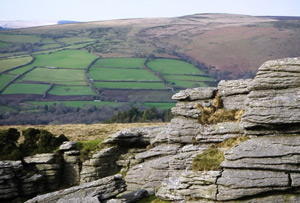
Much of the National Park’s attractions are related to the farmed landscape and managed vegetation enabling public access and recreation. The park is famed for its landscapes, archaeological sites (6% of the national total) and access. In 2017 the national Park attracted 3m visitors.
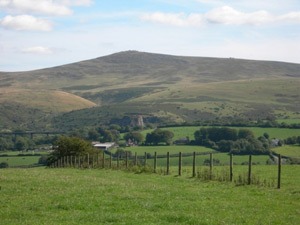
On the enclosed farmland HNV farming is now found on less than 40% of the land. It is surrounded by intensively managed farmland.

The blanket bog covers extensive areas of peat and stores carbon. Maintaining the short sward and wet conditions protects the peat from erosion and provides important habitats for birds such as dunlin.
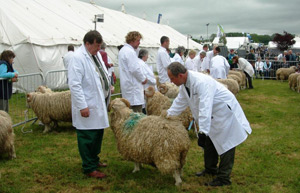
Dartmoor farmers participate at the Devon County Show. Communal grazing and agri-environmental agreements on commons include all graziers. This well-established social cohesion creates an almost unique community.
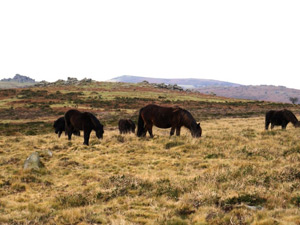
Hill ponies used to be traditional grazers of the common land and in managing moorland. But a recent fall in value of ponies together with increases in regulation means many farmers no longer keep a herd of ponies.
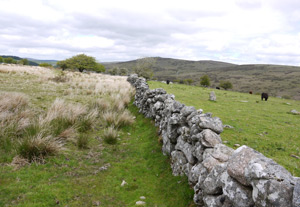
Overall stock numbers are now low resulting in areas of scrub, rank grassland and gorse. The effort of managing low numbers of animals can be greater than the effort required for larger numbers. However the enclosed land is often over-grazed and losing its HNV value. Under-grazing creates more problems for farmers and visitors and is a fire
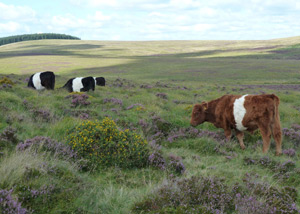
Recent regulation intended to control TB in cattle has implications for cattle grazing on common land. Movement regulations and testing regimes are not suitable for extensive grazing on the moorland and creates problems for cattle farmers.

There is widespread concern that the agri-environmental agreements are creating under-grazing resulting in the dominance of less palatable vegetation, especially Mollina grassland. These areas are increasingly vulnerable to wild fire with its accompanying threat to important vegetation, animals, property and peat.
Following the UK’s departure from the EU the situation for farmers is unclear. Farming in the hills has been supported since 1945 but there is no confirmation such support will continue. Without support hill farmers will struggle to continue.
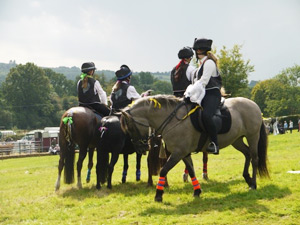
No future, not financially viable and isolated working may deter the next generation from continuing the family farm. Surveys of the farming community give different messages with some suggesting that the next generation will be as engaged as the present one.
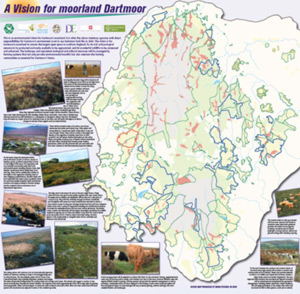
The Dartmoor Moorland Vision is an example of an innovation designed to help farmers and improve communication between all the stakeholders. Seen to provide confidence of a longer term future and need for grazing to continue the vision addresses the perceived differences in the land management demands of ecologists and archaeologists.
The Dartmoor Vision
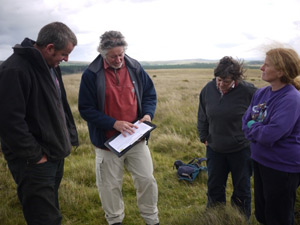
A novel approach to delivering agri-environmental agreements. It is designed with farmers and rewards the outcomes, and thus encourages farmer engagement and delivers a range of public benefits. Farmers are trained to monitor the agreement outcomes.
Dartmoor Farming Futures

The Council is a statutory body, established in 1986, and farmer led. It ensures those with common grazing rights are able to exercise those rights whilst prohibiting farmers without rights. It has regulations to ensure good animal husbandry and welfare.
Dartmoor Commoners’ Council
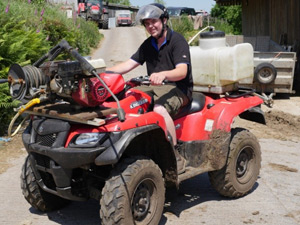
Prior to the adoption of the Fire plan no commoners/farmers were allowed to work alongside the professional fire fighters, however after training, provided by the Fire Service, they were allowed to work alongside the professionals at the front line. New equipment was invented and plans adopted for all commons.
Fire Management Plans
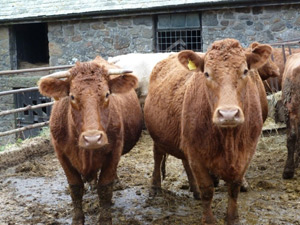
HNV-Link is discussing options jointly with regional authorities and farmers for adapting TB control to local to the needs of local farming system, with more flexibility on the issue of immobilising flocks, and addressing the problem of wild fauna vectors. A new working group has been set up.
TB Control Plans

Farmers need simple but effective incentives for being rewarded for the delivery of clearly defined environmental outputs. The ones who perform best in co-producing biodiversity and other public benefits deserve being acknowledged and celebrated. Useful innovation examples: The Burren programme a locally targeted hybrid agri-environmental scheme and Farming conservation awards celebrating HNV farmers in Ireland
Ireland: The Burren programme: A locally targeted hybrid AES
Ireland: Farming conservation awards

Many farms are remote from services for their products. Mobile abattoir (slaughterhouses), would help to reduce farmers' costs, advance animal welfare by reducing transportation of live animals, and improve traceability. Useful innovation example: Hälsingestintan in Sweden
Sweden: Mobile abattoir
Situated in the south-west of England, Dartmoor rises from the surrounding lowland to over 620m. Dartmoor is a farmed landscape containing a wide range of important habitats: including blanket bog, moorland with a mixture of wet and dry heath, extensive grasslands, and mires. Enclosed farmland surrounds the moorland, and woodlands are confined to the valleys. Large areas of Dartmoor are designated under both national and EU legislation, with the core areas of blanket bog and dry heath. It is protected and managed as a National Park. For more information on the area, see Baseline Assessment.
Innovations in Dartmoor:
- The Dartmoor Vision
- Dartmoor Farming Futures
- Dartmoor Commoners’ Council
- Fire Management Plans
- TB Control Plans
Innovations of relevance from other project areas
- Ireland: The Burren programme: A locally targeted hybrid AES
- Ireland: Farming conservation awards
- Sweden: Mobile abattoir
If you are aware of innovations dealing with issues below that are needed in Dartmoor, please, get in touch with the area contact person:
- Approaches to dealing with animal health Regulations (especially TB) in extensive systems on common land.
- Successful means of linking HNV products to markets on a large scale and especially learning how the obstacles were overcome
- Examples of advisory/training/education provision which is both locally adapted and geared to HNV systems (including the intensive element of those systems) and how they are funded, organised
- Use of Rural Development Programme payment schemes to support HNV grazing systems on a large scale, especially on common land.
- Locally-led projects that set outcomes for farmland with the farmers having the opportunity to input their expertise and knowledge.
- Examples of techniques and technologies for HNV grazing livestock systems (including ‘agroecological’ approaches to inbye land)
Other Downloads:
More info: www.dartmoor.gov.uk / Contact person: Gwyn Jones, EFNCP
(July 2018)

